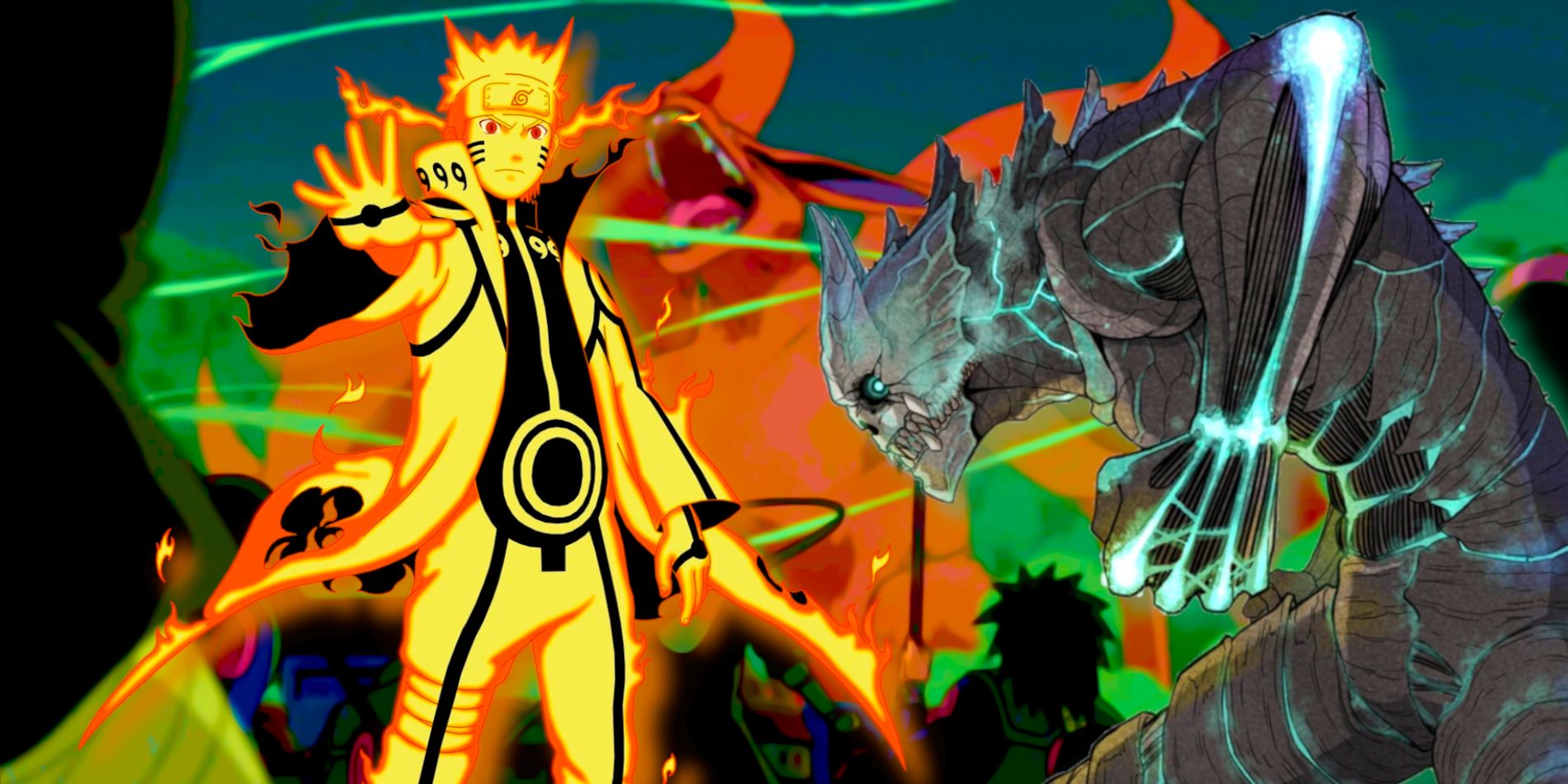
Summary
Kaiju No. 8 is compared to Naruto due to its shared inspiration from Kaiju, such as Godzilla and Ultraman. Both series feature protagonists with transformative powers, humor, and the ability to overcome adversity. Kaiju Shonen anime is not new but is gaining popularity, with Kaiju No. 8 leading the way and poised for success.
Upon discovering the new hit anime adaptation of Kaiju No. 8, featured on Crunchyroll and X, it's bold to compare it to Naruto or its by-products. After all, at the start of their story, Kafka Hibino, the main character of Kaiju, was twenty years older than Naruto Uzumaki. However, what Kaiju No. 8 has in common with modern Shonen classics is also one of its basic concepts.
Kaiju No. 8 is an action manga that was first released digitally on Shonen Jump+ in 2020. It immediately attracted readers looking for action and giant monsters at the same time. time to subvert familiar tropes, such as in Godzilla or Ultraman.
The film is about a protagonist who feels like his dream of fighting monsters in the Self-Defense Forces has come and gone, forced to live a mediocre life as a member of a team that cleans up monster organs . With over 13 million copies sold in less than four years, Kaiju No. 8 was an undeniable success, and its anime debut created a buzz that drew comparisons to Naruto, especially in one key area. factor: the enormous scale of the battles.
Kaiju No. 8 and Naruto Anime share a monstrous trait
The characters in the latest Crunchyroll Hit resemble the big three of Shonen
Kaiju No. 8 and Naruto each have a massive, deadly monster living inside them. For Kafka, it's the Kaiju; for Naruto, it is the Tailed Beast or “Biju”. Each character undergoes physical transformations, of which Kafka has greater control. Both are shunned or feared by their communities in their transformed states, as revealed in the first chapters of both series. However, the two main characters are able to overcome their peers and use their unorthodox abilities to pursue their dreams. Each series has elements of humor and both feature the humble beginnings of their main characters living in poverty.
However, the characteristics of the Kaiju genre shared by these two series are not coincidental. Both are inspired by Godzilla, with Kaiju No. 8 heavily inspired by Ultraman. In Naruto's case, it's less overt. However, series creator Masashi Kishimoto discussed how Godzilla and other Kaiju inspired the Tailed Beasts:
This whole story about these tailed beasts started as a simple way for me to include a fox in my manga.[…] I just wanted to draw a monster—something big that I could place in battle. -Masashi Kishimoto
With the Kaiju novel on the rise, GodzillaMinus One generating record box office numbers and winning Oscar gold, and Kaiju No. 8 beating out Crunchyroll and X, the world wants more. Naruto may have cleverly pulled off some Kaiju action in a safe ninja guise for the popular market, but audiences crave the genre more.
Kaiju Shonen Anime is not a new concept but it is gaining attention in the industry
Kaiju No. 8 carries the torch for previous hit anime series featuring giant monsters
Kaiju is a loaded term, meaning “strange monster” and surprisingly malleable. Giant monsters, including Kaiju, are common in recent manga, like Snowball Earth and are said to be similar to Chainsaw Man. Series featuring looming horrors longing for the flesh or destruction have brought anime into the mainstream, including Attack on Titan, and continuing presences such as Hell's Paradise and One Punch Man. Even Evangelion has Kaiju elements borrowed from Ultraman, but Kaiju No. 8 makes them the main attraction.
It's difficult to gauge Kaiju No. 8's success as an anime. It ranks well among MyAnimeList's seasonal shows, both in terms of overall score and the number of members who support it in the hundreds of thousands. Upcoming episodes will show Kafka, Leno, and others vying for the right to become members of the Self-Defense Forces, becoming a pivotal point similar to the Chunin Exams in Naruto. But like Boruto, Kaiju number 8 should avoid hindering comparisons to its famous predecessors, and instead strive to create its own identity as a cult shounen anime.





